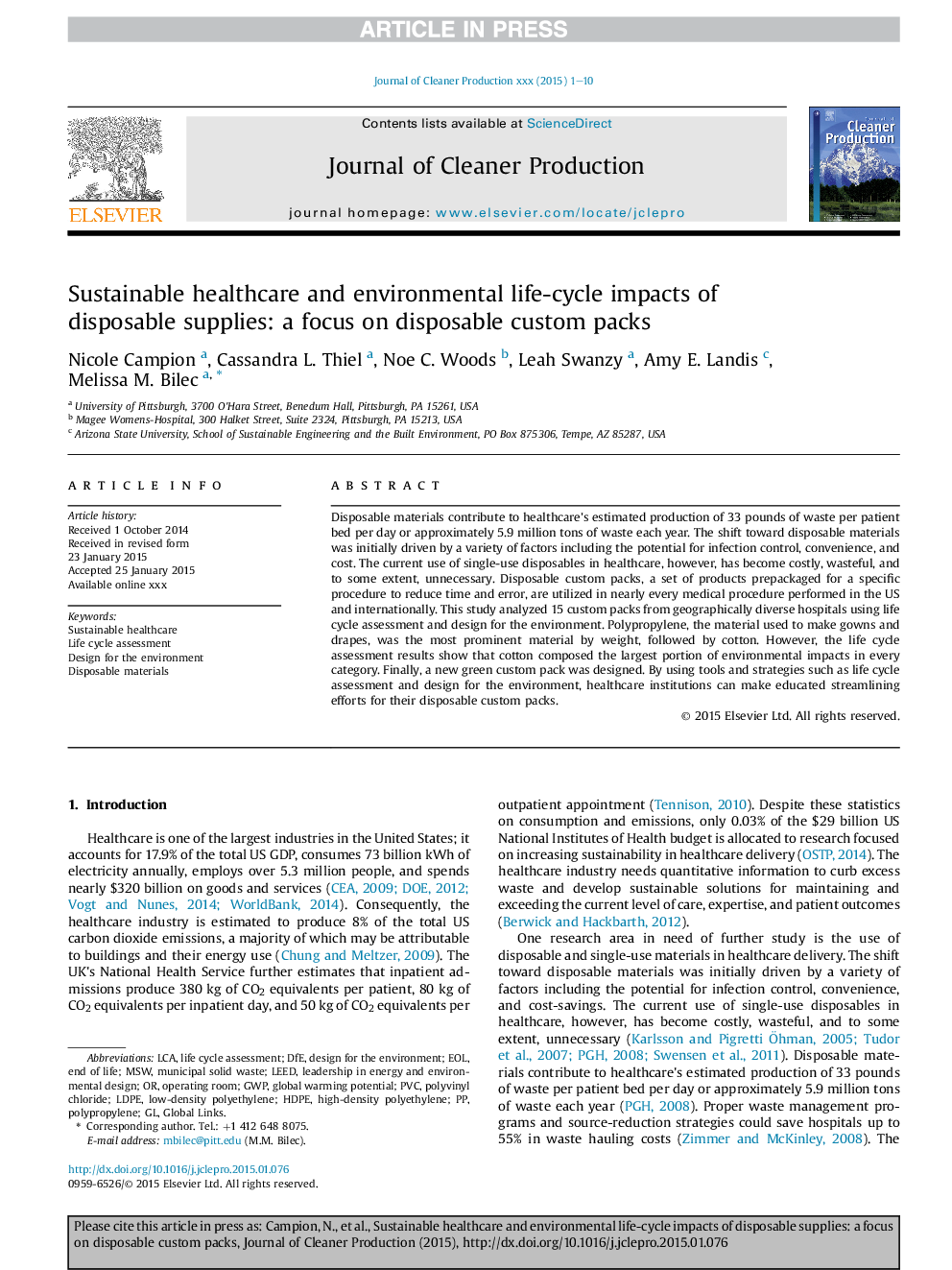| Article ID | Journal | Published Year | Pages | File Type |
|---|---|---|---|---|
| 8104538 | Journal of Cleaner Production | 2015 | 10 Pages |
Abstract
Disposable materials contribute to healthcare's estimated production of 33 pounds of waste per patient bed per day or approximately 5.9 million tons of waste each year. The shift toward disposable materials was initially driven by a variety of factors including the potential for infection control, convenience, and cost. The current use of single-use disposables in healthcare, however, has become costly, wasteful, and to some extent, unnecessary. Disposable custom packs, a set of products prepackaged for a specific procedure to reduce time and error, are utilized in nearly every medical procedure performed in the US and internationally. This study analyzed 15 custom packs from geographically diverse hospitals using life cycle assessment and design for the environment. Polypropylene, the material used to make gowns and drapes, was the most prominent material by weight, followed by cotton. However, the life cycle assessment results show that cotton composed the largest portion of environmental impacts in every category. Finally, a new green custom pack was designed. By using tools and strategies such as life cycle assessment and design for the environment, healthcare institutions can make educated streamlining efforts for their disposable custom packs.
Keywords
Related Topics
Physical Sciences and Engineering
Energy
Renewable Energy, Sustainability and the Environment
Authors
Nicole Campion, Cassandra L. Thiel, Noe C. Woods, Leah Swanzy, Amy E. Landis, Melissa M. Bilec,
